
Trane vs. Carrier – Which HVAC System Is Best?
Trane vs. Carrier Furnaces, when searching for the best HVAC system available, two companies will stand out. This guide compares Trane vs. Carrier to see which is better.
Part of being a homeowner means getting maintenance on your home every once in a while. This might mean updating the kitchen or installing new windows. Or it might mean getting a new HVAC system.

But how do you decide which system is the best one for your home? What is the difference between a Trane system and a Carrier system? How do you make that HVAC system comparison?
Trane and Carrier are both some of the leaders in HVAC system manufacturing. It’s hard to go wrong with either one.
Discover which HVAC replacement system is best, Trane vs. Carrier.
Corporate Information:
Trane
Carrier
Trane vs. Carrier: Energy Efficiency
Both Trane and Carrier have very similar energy efficiency scores. This is based on the Seasonal Energy Efficiency Ratio (SEER). This number is the cooling output of the air conditioner, divided by the energy it uses.
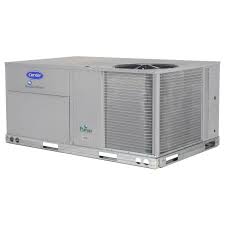
This gives you a good idea of how energy efficient your system is. The larger the number, the better it is. In this case, you also need to compare both company’s lower-end systems to their higher-end systems.
The lower-end systems are going to have the lowest SEER. However, this doesn’t mean they aren’t efficient systems. The standard minimum SEER in the United States is 13.
Both the Trane XR14 and the Carrier 24ABC6 systems have a SEER of 16.
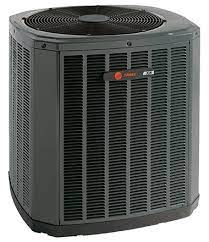
Their mid-tier systems are where they start to differ only slightly. The Carrier Infinity 17 has a SEER of 17. The Trane XV18 has a SEER of 18.
In other words, both of these systems are still very close in energy efficiency.
Finally, the top-tier systems are going to be the most energy-efficient systems that both of these companies sell. They’re also the most expensive, but you might find the price worth it for the best systems on the market right now. Their SEER scores are also going to be very similar to each other.
The Carrier Infinity 21 is the lower of the two with a SEER of 21. Meanwhile, the Trane XV20i has a SEER of 22.
The truth is that both companies are very close when it comes to energy efficiency. So any one of these systems is going to save you money and energy compared to an old AC system model.
Trane vs. Carrier: Performance
Performance refers to how well the system cools down your home to comfortable levels. How long does it take to bring the temperature down? Can it successfully keep up with the demands of your household?
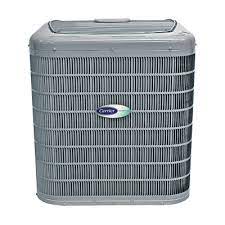

Each system has different speeds the fans can be set to and increments based on those speeds. These two items combine to create the percentage capacity that the system is running at any given time. This is a large part of what determines how well your new air conditioner system will perform.
The Trane XV20i system, for example, has a capacity range of thirty to one hundred percent capacity. It also has seven hundred different speed settings that you can set it to. This gives those speed settings increments of 0.1 percent capacity.
This gives you a great deal of control over the speed and performance of your air conditioning system. It also helps you control the noise levels of your system.
This is compared to the Carrier Infinity 19VS. This system has five different speeds available. Its lowest available capacity percentage is twenty-five percent.
This means it has an interval of 18.75 percent between speed settings. That’s a fair amount of control over how well your air conditioner is performing.
Carrier’s system may have fewer speed settings, but some people might actually prefer this. It could take a while to discover the perfect setting when you have seven hundred different options that are so close to each other. Then again, some people might prefer the larger variety.
Trane vs. Carrier: Warranties
The next thing you are probably wondering about is warranties. Occasionally, people end up with machines that just aren’t built right for one reason or another. When this happens, these companies protect both you and them from having issues by providing you with warranty coverage.
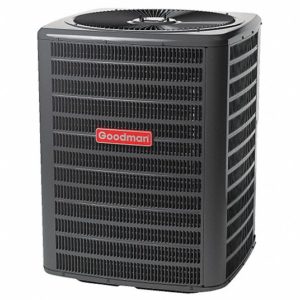

In the case of air conditioning systems, there are two different warranties that companies provide. The first is a warranty on the compressor. The second is a warranty on parts.
Carrier carries the same warranties on all of its models. They always have a ten-year warranty on both the compressor and parts. This gives you a consistent guarantee any time you purchase from them.
This also means you don’t get a better warranty when you purchase a higher-end Carrier HVAC system. That’s something many customers might want to be aware of before they purchase.
Trane, on the other hand, splits their warranties slightly. All Trane HVAC systems have the same ten-year warranty on parts. This is the only warranty that is consistent across all Trane systems.
Trane offers a twelve-year warranty on the compressor. This is only for their XV and XL HVAC systems. If you’re looking at getting one of their XR systems, then you’ll only get a ten-year warranty on the compressor.
The reality is that these warranties are really only there to protect customers from faulty systems. If something is wrong, then chances are that it will take much less than ten years to discover the problem. So really either warranty should be more than enough to protect your investment.
Trane vs. Carrier: Smart Technology
Smart technology is being integrated into almost every part of the modern home. HVAC systems are no exception to this rule. That’s why many HVAC companies are starting to include their own smart technology.
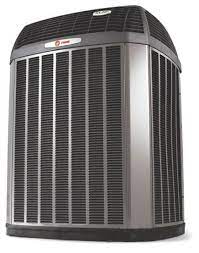

This allows you to control your HVAC system from a computer or mobile device. You can adjust the temperature in your home, set a schedule, and even change the fan speed right from an app. Both Carrier and Trane even have a humidity control included with their smart technology.
Carrier has their Infinity Touch system that controls the humidity of their systems. Trane’s is called Comfort-R. Both of these remove excess humidity from the air during the warmer months to make your home more comfortable.
Both of them are also starting to include smart thermostats with their systems. Trane has ComfortLink II and Carrier has Infinity. Carrier also partners with Côr to make their thermostats.


ComfortLink II only pairs to the Nexia smart home system, while Infinity and Côr can pair to Amazon’s Alexa system and Côr Smart Home. This allows you to change your system’s settings from a voice control system.
The main difference between Trane and Carrier is what systems they offer these features for. Wifi services are only included in Trane’s top models. Carrier, on the other hand, offers these services on all of their systems.
But the top models of both companies are the only ones with communication services. This means in the lower-end models, communication only goes one way rather than both ways.
Trane vs. Carrier: Future Repairs
Finally, the last thing you’ll need to consider is future repairs. While your HVAC system’s warranty is only going to last for about ten to twelve years, the system itself should last for about fifteen to twenty-five years. But chances are, your HVAC system is going to need some repairs along the way.


This might involve some simple cleanings or repairs. It could also mean that you need a new part.
While your system is under warranty, this service should already be covered. Replacing parts is going to be free of charge at this point.
However, if your system is out of warranty, then you’re going to have to pay for those repairs out of pocket. This can get expensive either way, but Trane tends to be a little more pricey to repair than Carrier systems.
This is because Trane parts tend to be more expensive. Many distributors sell only Trane parts, rather than cheaper generic parts. This, in turn, tends to make Trane systems more expensive to repair.
This issue tends to be exclusive to small towns and rural areas. Those that live in larger urban areas are more likely to get repairs done for cheaper. So keep in mind your location when you go to order repairs on your HVAC systems.
On the other hand, Carrier systems are repaired by those cheaper generic parts. So if something goes wrong with your HVAC systems, a Carrier system is going to be a little cheaper to repair. But again, this is also going to depend on where you live as well.
You’ll Always Win When You Choose Between Trane vs. Carrier
When you’re trying to decide between a Trane vs. Carrier HVAC system, it doesn’t matter which one you choose in the end. Either way, you’re going to get an efficient and reliable HVAC system. So while you should make the effort to do an HVAC system comparison before you purchase, the decision ultimately comes down to your own preferences.
And the best place to get either one of these systems is right here at HVAC Service Cost. We help connect you with the most affordable and reliable HVAC services in your area.
Get a quote today and see how we can help you.





Leave a Reply